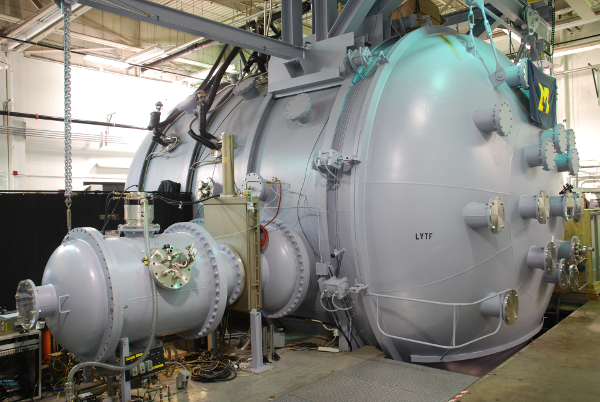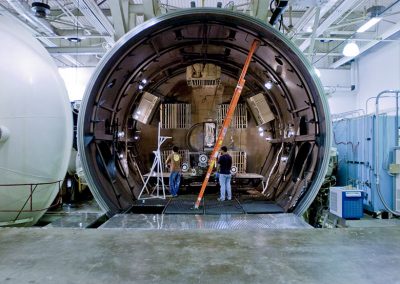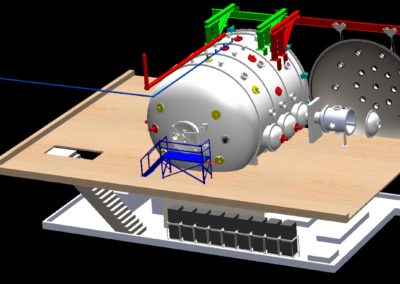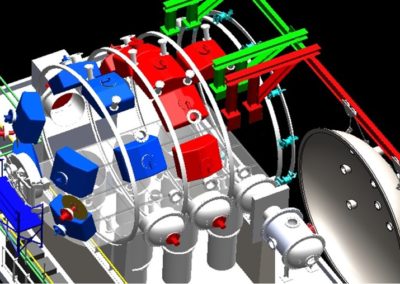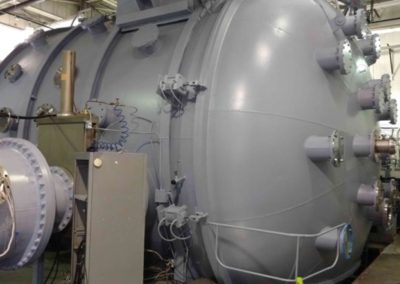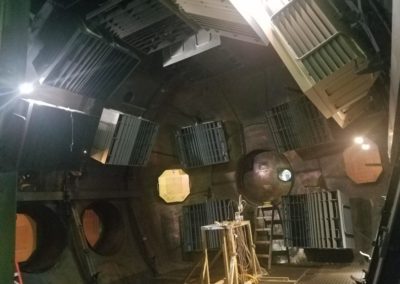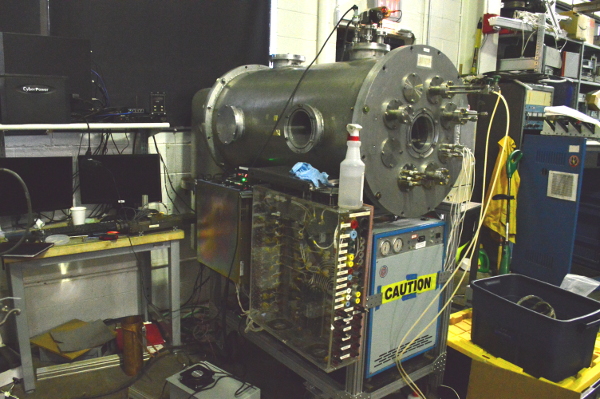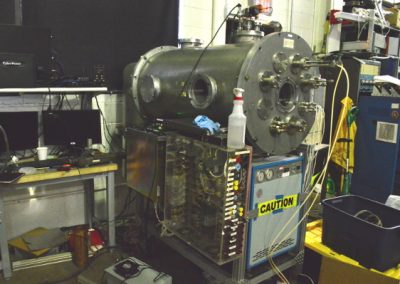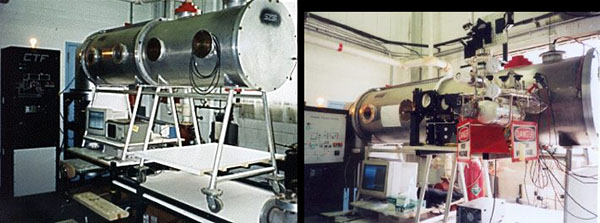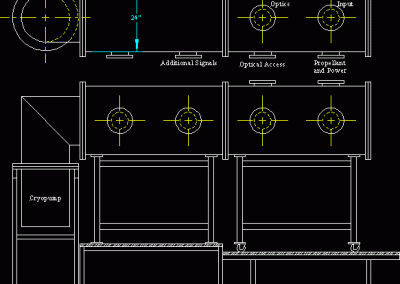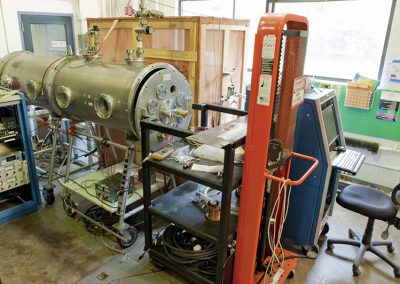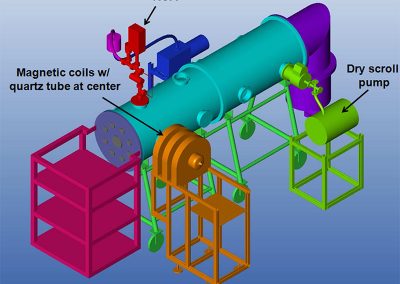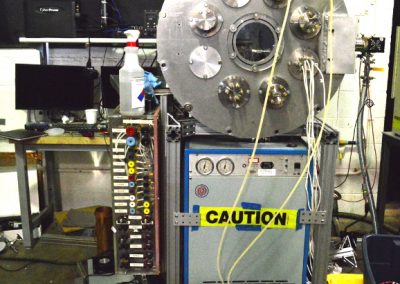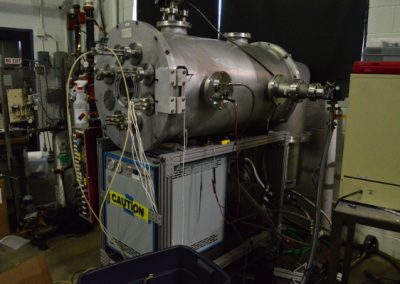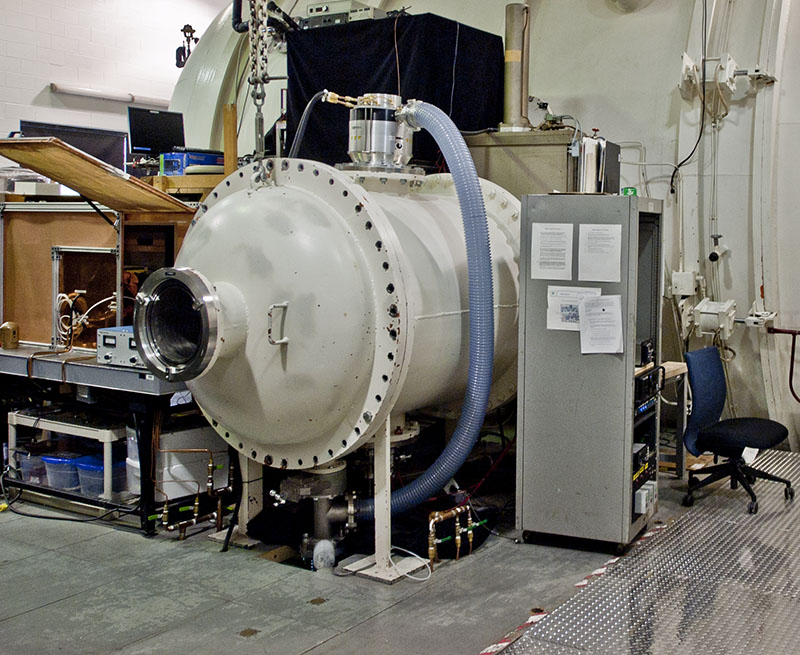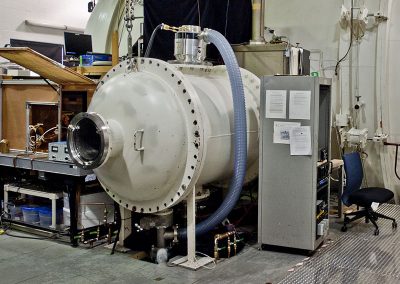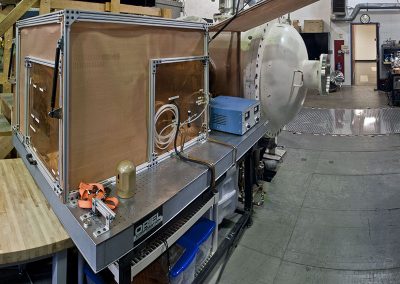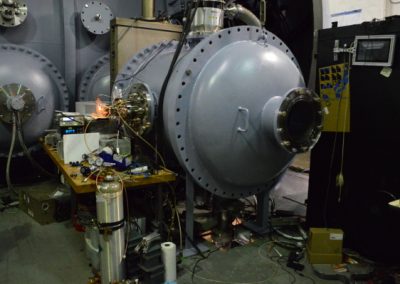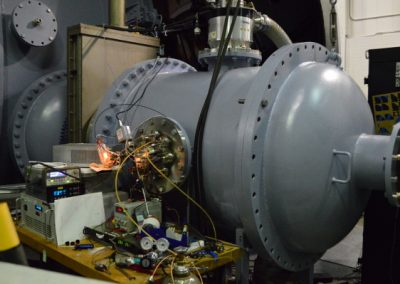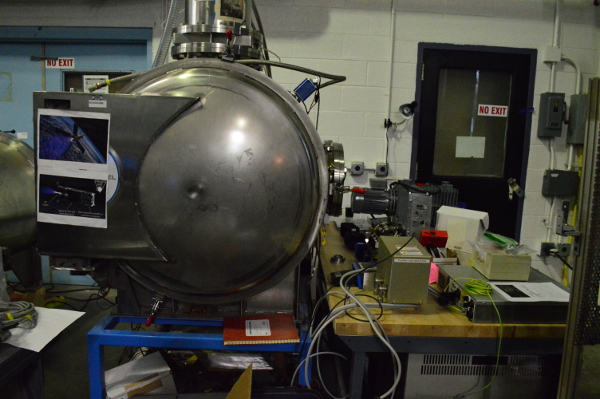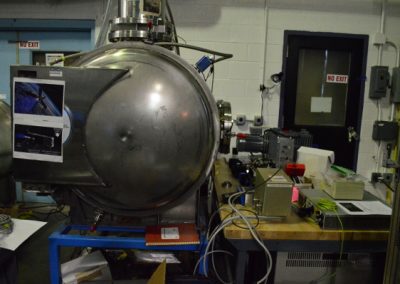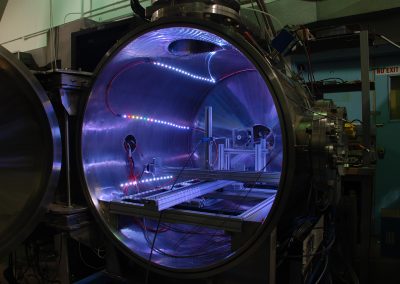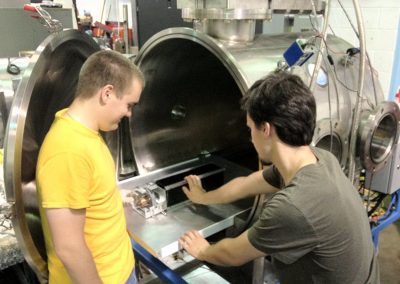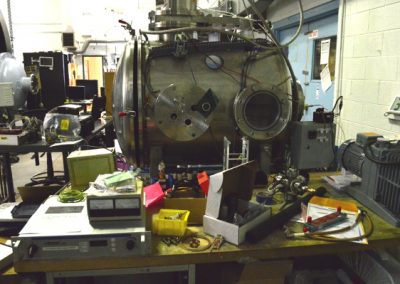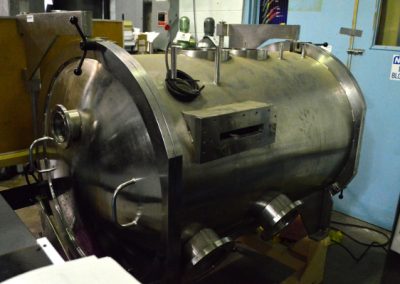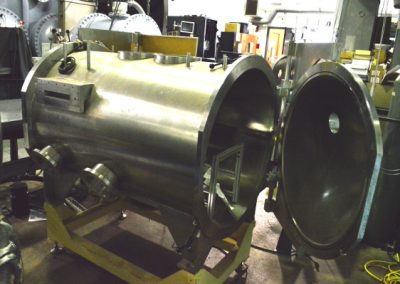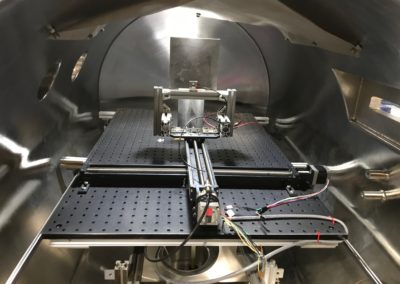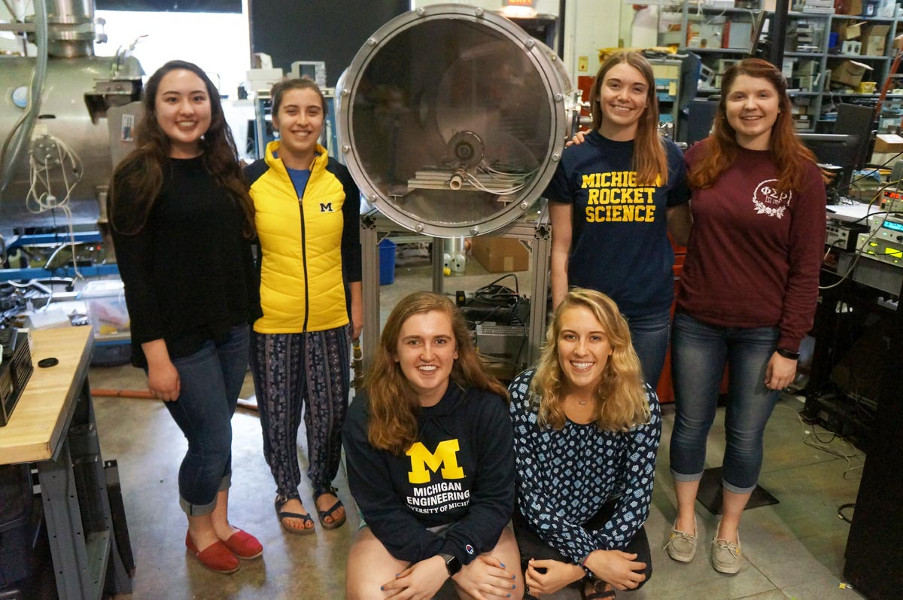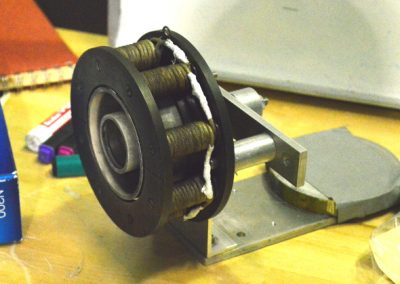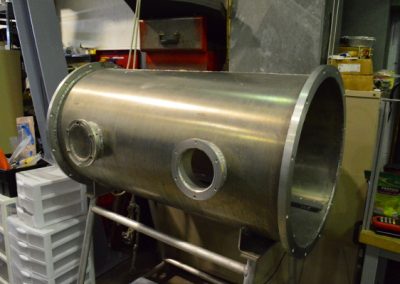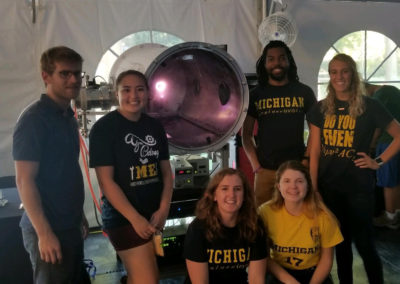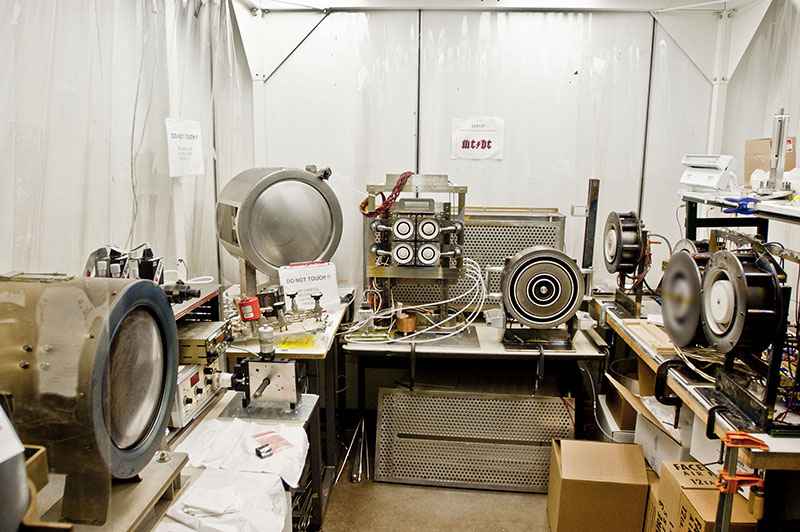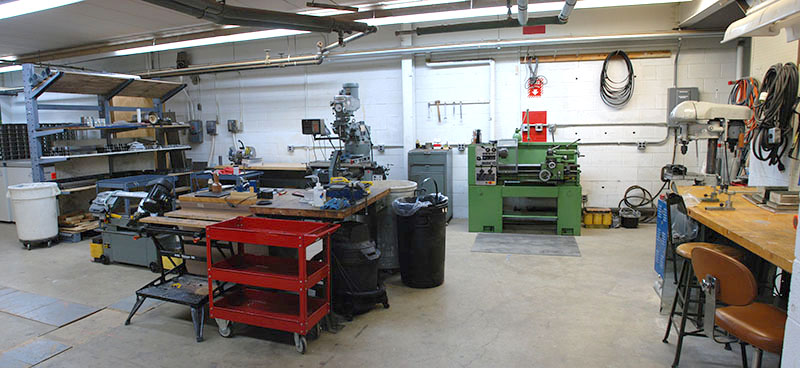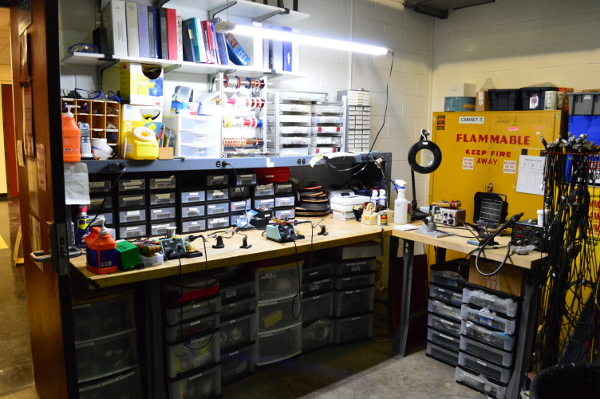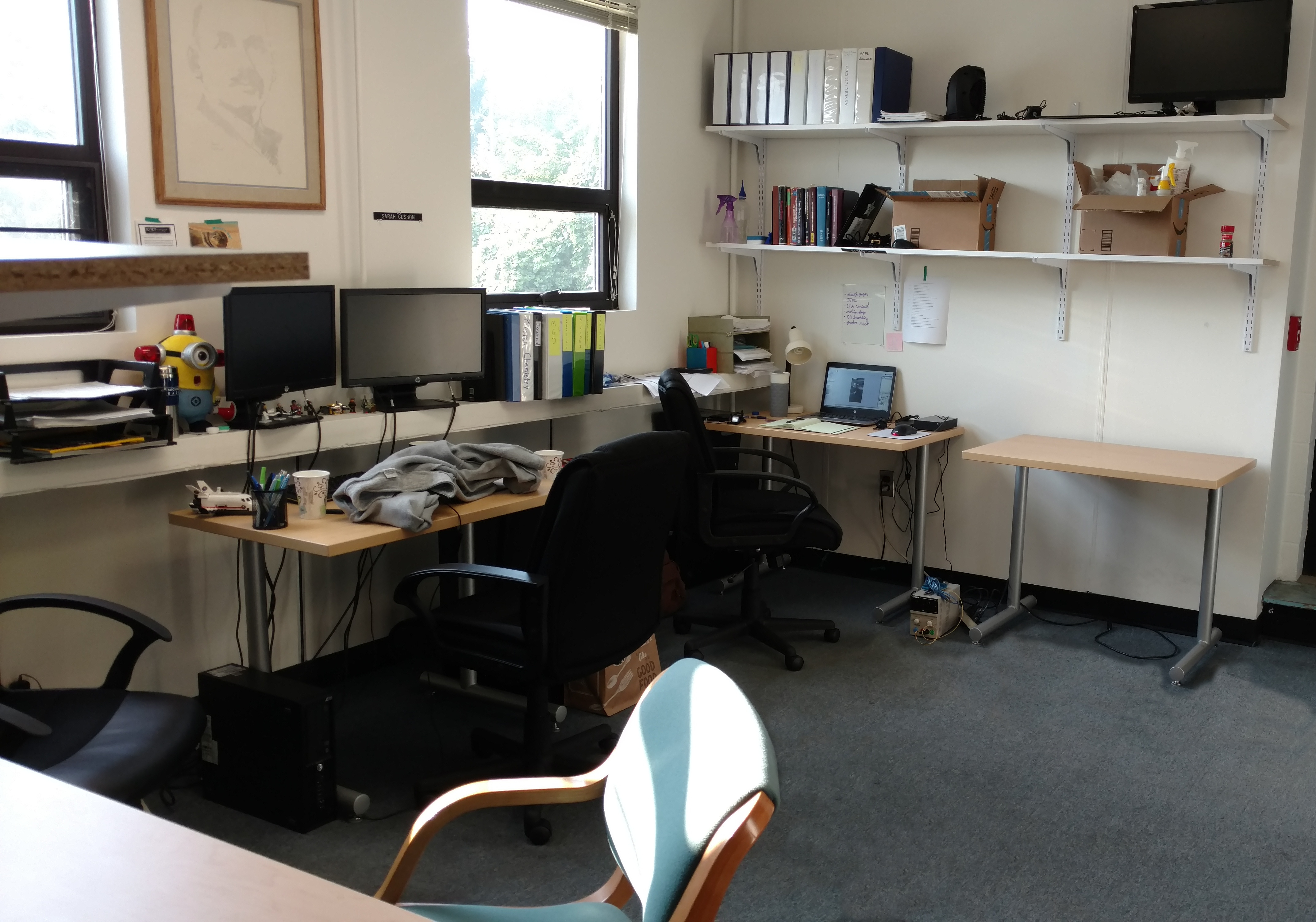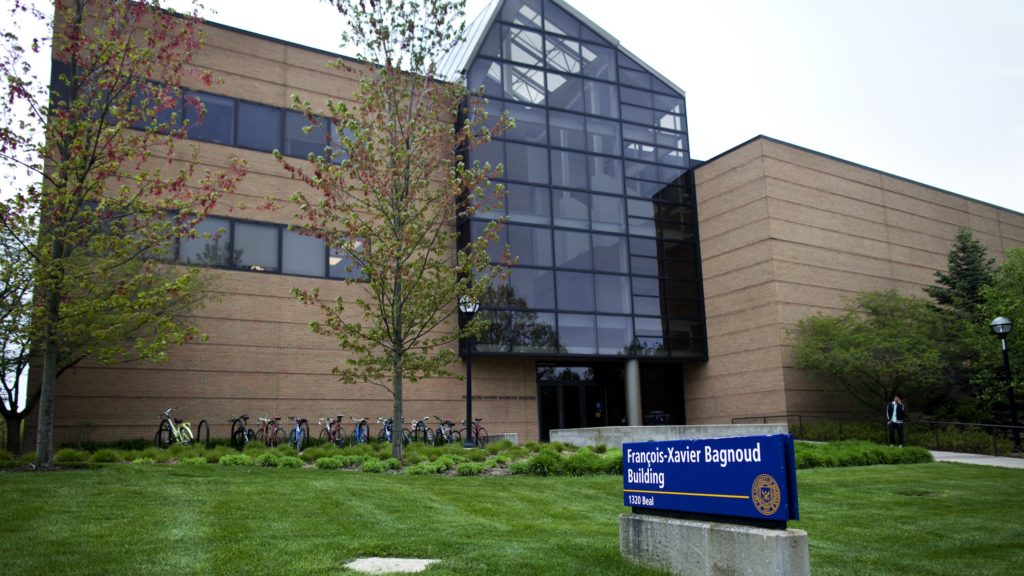Facilities
Large Vacuum Test Facility (LVTF)
The centerpiece of PEPL is the Large Vacuum Test Facility. This cylindrical stainless-steel clad tank, which is 9 m long and 6 m in diameter, is the largest vacuum facility of its kind at any university in the nation. The chamber is evacuated by two 2,000 cfm blowers and four 400 cfm mechanical pumps to rough vacuum (~50 mTorr). To reach high vacuum (~0.1 μTorr-N2), the chamber employs thirteen CVI TM-1200 re-entrant cryopumps and six custom cryopanels, with a combined pumping speed of 600,000 L/s on xenon according to Viges et al. (2019).
Cathode Test Facility (CTF)
A smaller chamber is used at PEPL for testing very small engines and hollow cathodes. The Cathode Test Facility (CTF) is composed of two separable 1 meter long by 0.6 meter diameter aluminum segments pumped by a 135 CFM mechanical pump for roughing and a 20” CVI TM500 cryopump with a measured xenon pumping speed of 1,500 l/s. Base pressure for the facility is < 1x10-7 Torr. Experiments conducted to date include Laser Induced Fluorescence (LIF) and electron energy distribution function measurements of the plume of a hollow cathode plasma contactor, thermography of the hollow cathode, electron beam probing of the cathode-to-keeper gap, helicon work (2005-2009), and high-power HET cathode development (2010).
Junior Test Facility
The laboratory also operates a smaller vacuum chamber that is 3 m long and 1 m in diameter, which is attached to the Large Vacuum Test Facility (LVTF) via a 60-cm-diameter gate valve. The facility is sometimes referred to as the “Foster chamber” because it was first used by Ph.D. grad John Foster for his dissertation work. This vessel can be evacuated independently of the main chamber and serves as a test cell for conducting fundamental studies on plasma-electrode interactions (e.g., Stark broadening electric field measurements). Upgrades to the facility in 2007-2008 included the addition of a new turbo-pumping system. This chamber can presently attain a pressure of <5x10-5 Torr in under 30 minutes.
ECR Thruster Chamber
This chamber is intended to test propulsion for small satellites such as CubeSats. It is a 3 ft diameter 5 ft long steel chamber. The chamber is brought to rough vacuum with a scroll pump and reaches high vacuum using a cryogenic pump. The pumping speed is 1500 l/s on air and the facility has a base pressure of is 1x10-7 Torr. The chamber includes a 2-D motion stage which can be used for probes.
Electrospray Thruster Array Chamber (ETAC)
The Electrospray Thruster Array Chamber (ETAC) is PEPL’s dedicated facility for testing electrospray thrusters. It is a 0.81 by 1.22 m stainless steel vacuum chamber which achieves rough vacuum with a scroll pump and high vacuum (~5 uTorr) with a turbomolecular pump. An optical table mounted on slides provides a removable platform for constructing experimental apparatus, including a 2-axis motion system on which probes can be mounted.
MAISE Demonstration Facility
This facility is part of a permanent turn-key Hall thruster demonstration. It was designed/refurbished by the Michigan Advanced In-Space propulsion Engineers undergraduate group.
Clean Room
A clean room wherein most of PEPL’s electric propulsion thrusters, cathodes, and other sensitive plasma devices are stored. Nitrogen purges are continually active on the more sensitive devices (e.g. cathodes, PMTs, etc.).
Machine Shop
An in laboratory machining shop with a mill, lathe, belt/disk sanders, drill press, band saw, raw material storage (e.g. unistrut, 80-20, etc.), grinders, and other various equipment.
Electronics Bench
An area inside the main laboratory used to assemble electronic components for various PEPL research projects.
Laboratory Offices
Office space is available to students in rooms adjacent to the laboratory itself. This space is intended for writing, data analysis, and general deskwork that does not require the equipment available in the lab.
Laboratory Conference Room
Adjacent to the students offices is a conference room dedicated for use by PEPL. It can seat thirteen people and is equipped with a projector and whiteboard.
François-Xavier Bagnoud (FXB) Building
Home to the University of Michigan Department of Aerospace Engineering. Shared offices for PEPL graduate students taking classes are located in this building, as are associated faculty offices.

